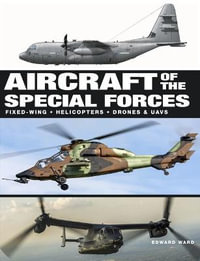
Exports of J-7/F-7/FT-/FTC-2000
China's Fighter for the World
By: HOLGER MULLER
Paperback | 31 March 2025
At a Glance
Paperback
$55.90
or
Available: 31st March 2025
Preorder. Will ship when available.
ISBN: 9781804513743
ISBN-10: 1804513741
Series: Technology@War
Available: 31st March 2025
Format: Paperback
Language: English
Number of Pages: 136
Audience: General Adult
Publisher: Helion & Company
Country of Publication: GB
Dimensions (cm): 29.7 x 21.0
Shipping
| Standard Shipping | Express Shipping | |
|---|---|---|
| Metro postcodes: | $9.99 | $14.95 |
| Regional postcodes: | $9.99 | $14.95 |
| Rural postcodes: | $9.99 | $14.95 |
How to return your order
At Booktopia, we offer hassle-free returns in accordance with our returns policy. If you wish to return an item, please get in touch with Booktopia Customer Care.
Additional postage charges may be applicable.
Defective items
If there is a problem with any of the items received for your order then the Booktopia Customer Care team is ready to assist you.
For more info please visit our Help Centre.
You Can Find This Book In
This product is categorised by
- Non-FictionWarfare & DefenceAir Forces & Warfare
- Non-FictionHistoryRegional & National HistoryAsian History
- Non-FictionHistoryGeneral & World History
- Non-FictionWarfare & DefenceWeapons & EquipmentMilitary VehiclesMilitary Aircraft
- Non-FictionHistoryMilitary History
- Non-FictionHistoryEarliest Times to Present Day20th Century History from 1900 to 2000























